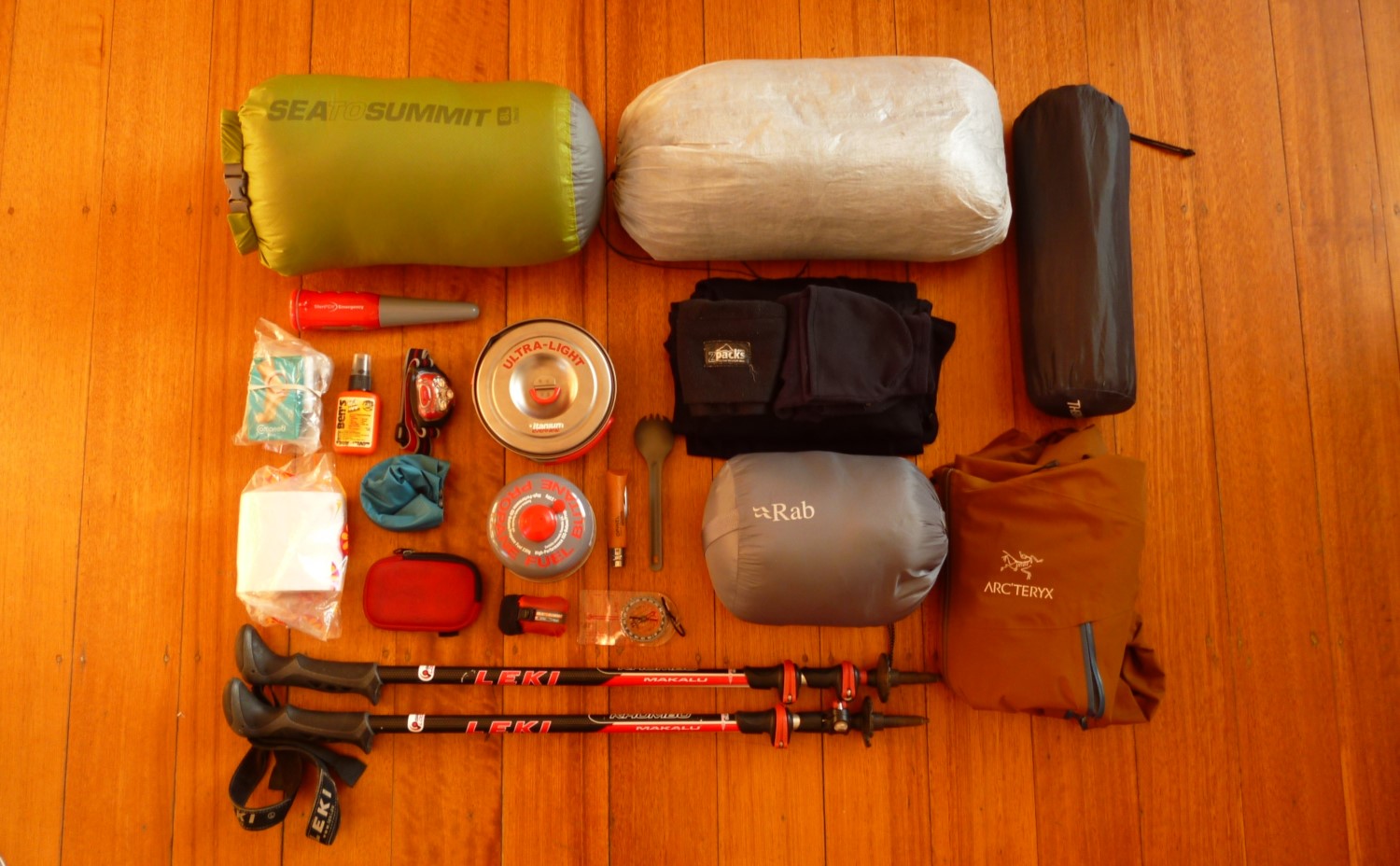Best Scuba Regulators of 2023
JUMP TO: ATOMIC T3 / AQUA LUNG CALYPSO / SCUBAPRO MK25 EVO/A700 / TUSA RS1207 / CRESSI AC25 MASTER CROMO / APEKS XT50 DST / HOLLIS DC7 500SE / BUYING ADVICE
Author: Rose Martin
The Short Version
Best for Traveling: Atomic T3
Best on a Budget: Aqua Lung Calypso
Best for Cold Water: Scubapro MK25 EVO/A700
Best for Beginners: Tusa RS1207
Best for Quiet Breaths: Cressi AC25 Master Cromo
Best for Versatility: Apeks XT50 DST
Best for Photography: Hollis DC7 500SE
The Long Version
If your first breath underwater was anything like ours, you were probably so mesmerized by the marine world that you hardly noticed your regulator – even though it was, quite literally, your lifeline!
Aside from tanks, regulators are the most fundamental bit of gear we need to breathe underwater. But they’re often the last bit of kit that divers invest in – probably because of their high price tags and slightly technical nature.
But as your scuba diving experience racks up, you’ll try a whole bunch of regulators and you’ll soon realize that no two are quite the same – some are ‘stiff’ while others breathe easy, some have awkward hoses while others swivel effortlessly into place, some make your jaw ache and others are a dream to wear.
Long story short, once you learn what you love in a reg, you’ll soon want one of your very own.
Plus, if you’re into technical diving, you don’t really have a choice – you need special regs for diving in seriously cold water and for breathing nitrox gas. On top of that, some regs are primed for diving with sidemount and twin-tank configurations.
Here, we’ve reviewed some of the top regulators around, making sure to cater to a range of needs (and budgets!).
If you love reading this review of the best scuba regulators, then you'll likely love reading some of our other diving related content:
Need To Know What To Look Out For?
Scuba diving regulators are relatively technical pieces of equipment – so if you are new to diving or aren’t sure about some of the more technical lingo, check out our buying advice at the bottom of the article!
Best for Traveling: ATOMIC T3
WEIGHT: 1.6 lbs
PORTS: High pressure 2, low pressure 5
FIRST STAGE: Balanced piston
VALVE: DIN and yoke models available
PRICE: $$$$
PROS: Ultra-lightweight, swivel prevents hose kinks, automatic venturi switch, very durable
CONS: Very expensive
The Atomic T3 is hands-down our top recommendation for anyone lucky enough head out on regular diving trips.
With an ultra-light weight of just 1.6 lbs, this regulator is one of the lightest on the market. Plus, it’s nice and compact, so it won’t take up much of your precious luggage space either.
But don’t let the light weight fool you into thinking this reg is flimsy… constructed mainly from titanium, it can definitely handle a few bumps and scrapes – and it’s resistant to corrosion too thanks to the PVD coating. The high quality of the craftsmanship is highlighted by the long servicing period – it only needs to be checked out every 3 years or 300 dives, so it’s an awesome regulator for anyone diving out in the sticks (where maintaining gear is tricky).
The first stage swivel compliments the minimalistic design, and results in a sleek configuration no matter how you arrange your hoses. And in case you aren’t sold already, the Atomic T3 also offers incredibly easy breathing without faffing around thanks to the balanced first stage and automatic venturi switch.
It’s available in both DIN and yoke models and is compatible with nitrox cylinders (up to 40%). Our major gripe with this amazing regulator is, unfortunately, the price tag – it certainly won’t be within every divers’ budget. But, if you can afford it, then we’re pretty sure you’ll love your investment.
Best on a Budget: AQUA LUNG CALYPSO
WEIGHT: 2.5 lbs
PORTS: High pressure 1, low pressure 4
FIRST STAGE: Unbalanced piston
VALVE: DIN and yoke models available
PRICE: $
PROS: Affordable yet features some nice extra touches, lightweight, easy to maintain
CONS: First stage isn’t balanced
If the price tags of regulators like the Atomic T3 make you want to cry, then fear not, the Aqua Lung Calypso is an awesome regulator that offers fantastic all-round performance at a surprisingly low price.
The latest line of Calypso regulators is lighter than previous versions and is also fairly compact. Although it doesn’t come with heaps of fancy features, the basic design makes this regulator super simple to use. It also makes maintenance a walk in the park (fewer parts = less to investigate), and we’re big fans of the mouthpieces that are super comfortable and incredibly easy to replace when the time comes.
We like that this reg comes with a venturi switch too (a feature often lacking from affordable regs). Plus, any yoke users out there will be pleased to know that there’s an extra filter in the yoke model that minimizes the effects of polluted air. While it might not be constructed from the flashiest of materials, this reg can handle some wear and tear – it’s super robust for its price range.
One thing to note is that the first stage of this regulator isn’t balanced, so breathing effort will increase slightly throughout your dive. However, all things considered, this regulator offers great all-round performance at a surprisingly low price point.
Best for Cold Water: SCUBAPRO MK25 EVO/A700
WEIGHT: 0.66 lbs (DIN first stage)/0.51 lbs (yoke first stage); 0.5 lbs (second stage; without mouthpiece)
PORTS: High pressure 2, low pressure (with high flow) 5
FIRST STAGE: Balanced piston
VALVE: DIN and yoke models available
PRICE: $$$
PROS: Cold-water friendly, incredibly easy breathing, extremely durable, lots of rotating ports
CONS: Slightly heavy, not the cheapest reg out there
Coldwater diving isn’t for the fainthearted, and it requires gear that’s up to the challenge – like the hardy Scubapro MK25 EVO/A700.
The MK25 EVO first stage features an environmentally sealed piston with a simplistic design that won’t let you down when you’re diving in frosty waters (or any temperatures for that matter!).
What’s more, the first stage is balanced too, ensuring a steady flow of air even throughout your entire dive. Plus, the A6700 second stage has an awesome valve that’s not only air balanced but is extra-large too, maximizing the flow of air in and out with every breath. And, in case that wasn’t enough, it also features an adjustable inhalation effort knob as well as a venturi-initiated vacuum assist switch, making for truly effortless breathing overall.
The chrome-plated brass body of the first stage and the all-metal casing of the second stage make this one dependable regulator, although be warned – it is a tad heavier than other, less robust, models. A final touch that we can’t get enough of is the port system – there are heaps of ports to choose from and the low-pressure ports are high-flowing and mounted on turrets to allow some rotation, resulting in customizable, ergonomic configurations.
It might not be the cheapest reg out there, but it will stand the test of time, perform well in a range of environments, and provides super smooth breathing, so we think it’s worth it overall.
Best for Beginners: TUSA RS1207
WEIGHT: 2 lbs
PORTS: High pressure 1, low pressure 4
FIRST STAGE: Piston
VALVE: DIN and yoke models available
PRICE: $
PROS: Super simple to use and maintain, lightweight, affordable
CONS: Only one high pressure port, lacks high-end features
If you’re after a beginner-friendly regulator that makes a great travel buddy, then look no further than the Tusa RS1207.
As much as I love diving, the thought of assembling and maintain gear used to terrify me... until I assembled one of these regulators. It really doesn’t take more than a couple of minutes and you’re good to go! The same goes for maintenance - the simple design means there isn’t much to check out, so it’s perfect for anyone new to the world of repairing gear.
Plus, the simple design of the Tusa RS1207 makes it incredibly intuitive to use. And we love the oversized purge valve that’s super easy to locate when you need it – ideal for beginners.
Some of the ‘techier’ divers out there might be disappointed by the lack of dual high-pressure ports and fancy features, but you’ll be pleased to know that it does at least come with a venturi switch to assist with breathing at depth. The minimalistic design has also helped to keep the weight nice and low, making this a great travel option.
It might not be the best regulator for cold climates but, if you’re more of a fair-weather diver, then the simplicity, dependability, and affordable price point make this reg an attractive option.
Best for Quiet Breaths: CRESSI AC25 MASTER CROMO
WEIGHT: 0.46 lbs (without hose)
PORTS: High pressure 2, low pressure 5
FIRST STAGE: Adjustable balanced piston
VALVE: DIN and yoke models available
PRICE: $$
PROS: Quiet exhalations, easy breathing, high-end features without a ridiculous price tag, turret rotates 360 degrees
CONS: Adjustment knob is a tad stiff, hose could be a little longer
If you love getting up close and personal with your aquatic friends, or just hate the ‘wheezing’ sound of loud regs, then we definitely recommend the Cressi AC25 Master Cromo.
With this regulator, you’ll barely hear your exhalations thanks to the noise-absorbing techno polymer body. This makes diving with this regulator very calming and means you can get closer to marine life for a more magical diving experience.
Plus, this reg features a balanced piston first stage, a venturi switch, and an effort adjuster knob (although it can be slightly stiff to use), so you can be sure of easy breathing regardless of depth and dive time. And you can fine-tune your resistance even further thanks to the Allen-key compatible nut in the first stage (but this is a task for the experts, not a DIY job!).
On top of that, it has heaps of ports so you can find the configuration that’s right for you, and four of the low-pressure ports are on a revolving turret to keep your hoses in prime position. It’s also fairly lightweight despite its solid construction thanks to the mixture of stainless steel, chrome-plated brass, and titanium elements. Just bear in mind that the hose on this regulator is a tad short – so it might feel slightly restrictive for larger folk or divers wearing bulky gear.
Overall, we think this reg is very reasonably priced considering the range of configurations and precise breathing control it offers – not to mention the awesome construction.
Best for Versatility: APEKS XT50 DST
WEIGHT: 2.5 lbs (DIN); 2.8 lbs (yoke)
PORTS: High pressure 2, low pressure 4
FIRST STAGE: Balanced diaphragm
VALVE: DIN and yoke models available
PRICE: $$
PROS: Cold-water friendly, extremely adjustable, nitrogen-compatible
CONS: Might be overkill for tropical waters, slightly heavy
The Apeks XT50 DST regulator comes with two high pressure ports and four low pressure ones – and you can even upgrade this to five if you like.
The low-pressure ports are actually more like medium pressure ports thanks to their generous pressure, and they’re located on a rotating turret to ensure optimal placement. What’s more, the braided flexi hoses themselves reduce the chances of bends and kinks even further. These features make this an awesome regulator for sidemount and twin tank diving, but it doesn’t stop there…
This first stage is entirely environmentally sealed, while the valve features a patented heat exchanger that takes the chill out of cold gas and capitalizes on warmth in the water. These features make this reg an awesome choice for cold weather – as does the large venturi lever and grippy effort control switch that are easy to operate (even when donning gloves).
Another feature we’d like to mention is the additive used in the construction of the second stage – it protects against pretty much all kinds of water-borne pathogens, which is super important if you get stuck with a grizzly diving task in murky waters.
And there’s good news for any lefties out there – you can alter the second stage to a left-handed configuration by taking it to a qualified technician. This reg is also nitrogen-compatible and available in DIN and yoke options. Oh, and you can even choose between a small exhaust tee if you’re keen to cut down on bulk or a larger tee that will minimize bubble interference (this one comes as standard).
In summary, this very customizable reg has been built to deal with a huge range of set-ups and conditions, making it popular among both recreational and technical divers. In fact, there’s very little this regulator can’t do… yet the price is nowhere near as high as many other ‘techy’ regulators out there – what a winner!
Best for Photographers: HOLLIS DC7 500SE
WEIGHT: 4.4 lbs
PORTS: High pressure 2; Low pressure 4
FIRST STAGE: Balanced diaphragm
VALVE: DIN and yoke models available
PRICE: $$
PROS: Side exhaust reduces bubble distortion, suitable for cold-water diving, great for photographers and technical divers, stylish
CONS: Heavy
With the Hollis DC7 500SE you can finally say goodbye to your best underwater shots being ruined by bubble distortion. The side exhaust valve of this regulator sends those pesky bubbles to the side, making it an absolute winner for photographers.
It’s also a popular choice among divers who prioritize comfort thanks to the patented orthodontic mouthpiece, which requires minimal effort to hold in place, and the fixed hose routing that’s perfect for sidemount diving (which is probably as close to freediving as you can get with a tank!). On top of that, the hoses are light and flexible, so you won’t find yourself fighting to keep them in place.
This regulator features an overbalanced first stage and is environmentally sealed too, so you can be sure of a steady gas supply throughout your dive, even in cold water – oh, and it’s nitrox-compatible too. We also like that it comes with a second high-pressure port and, like most Hollis products, has a stylish overall appearance.
This heavy-duty regulator is a little on the heavy side, which might put off travelers with a small luggage allowance, but, if cold-water diving, photography, or even just plain old comfort, are top priorities for you, then we reckon it’s worth the extra weight.
BUYING ADVICE FOR SCUBA REGULATORS
Regulators certainly aren’t the simplest bit of scuba gear out there (or the cheapest!), so let’s take a closer look at some key things you should consider before investing in one of your very own.
Valve
You might have noticed that all of the regulators mentioned here are available with either DIN or yoke valves, but what does this actually mean? And which one is right for you?
DIN: DIN regulators feature a screw with an O-ring on the end that attaches to a DIN-compatible tank. Because the regulator screws into the tank, the seal is very secure, and DIN tanks and regulators are traditionally considered slightly safer than yoke systems.
DIN tanks are the preferred choice of tank in Europe so, if that’s where you’ll be diving, it might make sense to opt for a DIN reg (but, if you’re diving elsewhere, you can remove an insert from most yoke tanks to make them compatible with your DIN reg).
YOKE: Yoke regulators (also referred to as A-clamps) lack an O-ring and feature a clamp instead. An external screw is tightened, ‘clamping’ the regulator to the O-ring that’s located on the tank itself. Although still very secure, this seal is more vulnerable to knocks than a DIN seal.
Yoke tanks are the standard type of tank in the US and most other diving destinations (but, if you’re diving elsewhere, you can add an O-ring to most DIN tanks so they’ll work with your yoke reg too).
Water temperature
WARM: Good news fair-weather divers, you don’t have to think about water temperature when shopping around for your next reg – standard regulators should work absolutely fine in water 50°F/10°C and upwards.
COLD: As a rule of thumb, for anything lower than 50°F/10°C, you’re going to need a regulator that’s environmentally sealed. This means that the internal parts of the first stage are completely protected from the environment, which stops them seizing up in cold environments. Other features, such as large purge buttons, can also make a regulator ‘cold-water friendly’, but this is merely referring to usability rather than safety.
Portability
WEIGHT: If you’ll be travelling a lot, then you might want to go for a lightweight regulator. Travel regulators tend to have various parts made from aluminum, and there are some extremely lightweight hose materials on the market nowadays. Lighter models also have the advantage of being easier to carry to and from the dive site and not burdening you as much in the water.
DURABILITY: …But if durability is the name of the game, then you’ll probably have to deal with some extra weight – there’s often a trade-off between weight and durability. Having said that, there are some very robust lightweight options out there too, but they’ll set you back a bit – so you’ll have to weigh up what’s really important to you.
Ports
HIGH PRESSURE: High pressure ports deliver air to your pressure gauge, but many regulators have more than one so you can use multiple gauges or a transmitter–air integrated computer system.
LOW PRESSURE: Low-pressure hoses deliver air to your regulator, octopus, BCD, and elsewhere.
HOW MANY: The ports are located on the regulator first stage, and you can choose where to connect your hoses to get your favorite configuration. So, the more ports there are, the more choice you have. Plus, certain types of diving require extra ports (e.g. an extra one for dry suit inflation).
SWIVELS: Some regulators first stages have ports located on turrets that swivel. This means that hoses leaving the ports can move around slightly, reducing awkward bends and kinks in the hoses.
Breathing
VENTURI SWITCHES: If you’re an avid diver, you’ve most likely used a regulator with a venturi switch at some point, even if you didn’t realize it at the time. The switches are found on the second stage of the regulator and can be set to pre-dive or dive (often marked as – or +).
But what do these switches do? Well, the venturi effect relates to how fast-moving air often sucks in the slow-moving air around it. This creates a vacuum which, in terms of regs, aids the flow of air out of the second stage. Many modern regulators capitalize on this effect to minimize breathing effort at depth, but it makes them more prone to free flowing at the surface. To stop this, venturi-assisted breathing is deactivated until you’re ready to breathe from your reg, at which point you flick the switch to dive mode for easy breathing.
EFFORT ADJUSTMENT KNOBS: People often confuse the venturi switch with effort adjustment knobs, but they’re very different things. The effort adjustment knob alters the amount of effort needed for the initial opening of the regulator when you breathe. This can be handy when you want to crank up the resistance in the face of current or high pressure (aka when you’re diving deep) to stop your reg from freeflowing, or lower it in calmer conditions for effortless breathing.
First stages
PISTON: The main advantages of piston first stages are their simplicity, which makes for easy maintenance, and their awesome air flow.
DIAGPHRAGM: Diaphragm first stages tend to be the preferred choice among cold-weather divers, as more parts of the first stage are sealed from water and are therefore less likely to malfunction due to the cold (this protects them from corrosion too) – but remember that both pistons and diaphragms can be ‘environmentally sealed’ using some kind of barrier material.
UN/BALANCED: The main difference between balanced and unbalanced first stage relates to breathing effort. Balanced first stages deliver air to the second stage at a constant pressure, regardless of tank pressure, so the breathing effort won’t change throughout the dive.
In contrast, if you’re breathing from a regulator that has an unbalanced first stage, you’ll notice that breathing effort becomes a little harder as the amount of air in your tank decreases. Although some people like this effect (it reminds them when they’re running low on air), most people prefer balanced first stages – but they generally cost a bit more.
MORE INFORMATION
If you loved this gear review article, then you'll likely love reading our other gear-fiend related articles:























